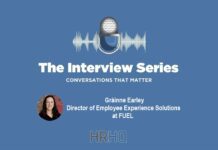Interviewers often make the yes/no hiring decision is less than one minute based on whether the person is articulate, attractive, assertive, and affable. None of these predict job success. They just cause hiring mistakes.
Over the years I’ve written a number of posts about the Performance-based Interview process I’ve been using for the past 40 years. I first developed this methodology by benchmarking how the best managers evaluated and hired the best candidates. It was honed based on tracking hundreds of these people over 10-15 years. As a result a few things stood out as great and not-so-great predictors of on-the-job success. The big ones:
The not-so-great predictors:
- The list of skills, experiences, academic requirements and competencies were rarely the same as listed on the job description. (Everyone should read this sentence again.)
- The person’s first impression – good or bad – was a terrible predictor of on-the-job success. (Everyone should read this sentence again.)
The great predictors:
- The person had a track record of accomplishments comparable – but rarely identical – to the actual work that needed to be done.
- The person had a track record of being assigned to, or volunteering for, difficult and/or stretch projects.
- The person proactively coached and helped others become better – including and especially peers.
Here are two posts that will help you get started on separating the best from everyone else.
- If You Want to Hire a Great Person You Need a Great Job. A great job is not a laundry list of skills, experiences, academic requirements and competencies. Instead it’s a list of challenges and tasks a top person sees as a career growth opportunity.
- The Most Important Interview Question of All Time. Ask candidates to describe a major accomplishment for each of the performance objectives listed in the performance-based job description. You will quickly know if the candidate is competent and motivated to excel doing the actual work.
Before asking the most significant accomplishment question you’ll need to conduct a thorough work history review. It offers an abundance of clues for assessing fit, performance and potential. Here’s are a few of them:
- Progression and recognition. At each company ask about promotions, special recognition, bonuses, title or job changes and why the person was assigned to different projects. Lack of any of these, or a series of short tenures at multiple companies, should raise the caution flag.
- Job-hopper or career-focused. Ask candidates why they changed jobs and if they achieved the objective as a result of the change. Job hopping syndrome is quickly revealed when a person takes jobs more for what he/she gets on the start date (title, location, compensation and company name) rather than what he/she will be doing, learning and becoming. Of course, everyone will say the latter was the reason, but it’s a phony excuse if it never pans out.
- Quality of team skills. For each major job, ask candidates to describe the teams they’ve been assigned to or were managing. Include direct reports, peers, people inside and outside the company, executives and people in other functions. Ask people how and why they were assigned to these work groups. If the teams are multifunctional and expanding in size, scope, impact and influence, especially at different companies, you can rest assured the person has exceptional team skills whether he/she is quiet or not or makes a good first impression or not.
- Quality of management skills. It’s a strong clue the person has strong management skills if the person has been promoted into bigger jobs over bigger groups as a result of previous successes. If so, ask about the quality of the people on each team and how the team was built and developed. The best managers proactively hire the best people and work hard to develop everyone. The less best live with who they inherit.
- Where the person excels. Ask people what type of projects they were assigned and why they were assigned to these projects within 6-12 months after they’ve started on a new job. Those with real talent get assigned projects ahead of their more experienced peers. If it happens frequently, a pattern of the person’s top strengths as recognised by others will emerge.
Too many interviewers get quickly seduced by the four “A”s – articulate, attractive, assertive and affable – soon after meeting someone for the first time. None of these factors predict on-the-job performance. You can cut through this veneer of superficiality by understanding real job needs and finding people who have a track record of doing comparable work in comparable environments. Much of this is revealed during the work history review. Don’t take shortcuts. The truth will become obvious by putting the person’s first impression into the parking lot until the end of the interview. When you take it out you’ll discover no one’s first impression is as good or as bad as you first imagined.
Permission has been granted from The Adler Group and Lou Adler, author of Hire With Your Head and The Essential Guide to Hiring & Getting Hired, to reprint this article.
About the author
Lou Adler is the CEO and founder of The Adler Group – a training and search firm helping companies implement Performance-based Hiring℠. Adler is the author of the Amazon top-10 best-seller, Hire With Your Head (John Wiley & Sons, 3rd Edition, 2007). His most recent book has just been published, The Essential Guide for Hiring & Getting Hired (Workbench, 2013). He is also the author of the award-winning Nightingale-Conant audio program, Talent Rules! Using Performance-based Hiring to Build Great Teams (2007). Adler holds an MBA from the University of California in Los Angeles and a BS in Mechanical Engineering from Clarkson University in New York.











































